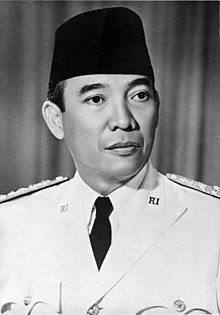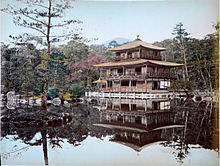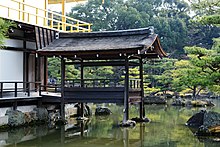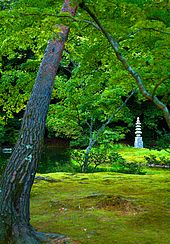first i went to School to took and registation the bike. after that I went to lapbal after the event start we past the bali street after a few minute we stoped and The committee planted a tree in armie's complex . After a few hours we went to school again.
alif akbar muhammad isra
Kamis, 25 Mei 2017
Minggu, 02 April 2017
1.To produce something
2. Become interpreters hospitalization
3. that is neither solid nor liquid
4. along piece of cloth worn around the neck
5. to become fastened
6. the parts of body have function for biting
7. the verb 3 from go
8. Something dificult to found
9. King of the jungle
10. An animal that live at the house
11.you and I and also another
12. a letter to go one person/place to another
13. strike down
14. far away from land
15. a copy data image to displyed on the screen
16. to make some one lost interest
Down
1.by way or going through
2. a child or young person
3.. made especially from sour wine, malt
4. not containing any things
5. a reserve movement
6. a very famous shopping place in Bandung
7. where many kinds of animal
8. an animal like a large rabbit
9. opposite from east
10. to move through the air using wings
11. to speak in a loud voice
12. a man, a guy
13. the smallest tactical unit of military personnel
14. used as a formal and polite way of speaking to a man
15. a word when you want you scare someone
Dewa athena
at 25 may I went to lapbal to attend dewa athena I just attended the opening of dewa Athena because after that I must attend biology training. I went to Sophia to made a permission about biology training next I went to SMA 3. When I was arriving I went to retro to took whiteboard. We discussed about the osk questions. We start with the material evolution, Biosystematics and ecology. we first discuss about monophiletic, paraphiletic and poliphiletic. Next we discussed about anatomy of tetrapod. Next is the water ecosystems like photik is the ecosystem of lake are exposed light. next we argue about nitrogen fixation. Next about anatomy and physiology of plant I think I can answers only one question about phloem tissue differences in angiosperms and gymnosperms. An the last about Huntington disease. Huntington disease
due to the distance to the gene locus. After that I went to lapbal and after any hour's I went to home
Minggu, 08 Januari 2017
My semester holiday
First day I went to met my junior high school. When I came to Gramedia They greetings me. We talk about binary, octal and hexadecimal. After That We went to Restaurant. next I went to home.
Second day I Went to BEC on the road I met with school friends who do not vacation because the value does not reach the criteria. after I bought external hard disk I went to home.
Minggu, 30 Oktober 2016

Ir. Sukarno was born in Surabaya on June 6, 1901. Ir. President Soekarno was first known as proclaimer with Dr. Mohammad Hatta. In 1926, he graduated from Technische Hoge School, Bandung (ITB now). On July 4, 1927, Sukarno founded the PNI (Indonesian National Party) to achieve the independence of his charisma and intelligence made him famous as an orator who can excite people. Dutch feel threatened by the attitude of his nationalism. In December 1929, Sukarno and other PNI leaders were arrested and imprisoned. PNI itself dissolved and changed into Partindo. His struggles continued after he was released, but in August 1933, proclaimed the independence of Indonesia's re-arrested and exiled to Ende, Flores, then moved to Bengkulu. Soekarno was released when the Japanese took over the Dutch. Japan called Ir. Sukarno, Mohammad Hatta, Ki Hajar Dewantara and K.H. Mas Mansur founded SON (Pusat Tenaga Rakyat) for the benefit of Japan. However, more precisely SON fight for the people's interests. As a result, Japan disperse SON. When a position in the Asia Raya started recessive War Allies, the Japanese established BPUPKI. At the hearing BPUPKI dated June 1, 1945, Sukarno put forward the idea of a basic State called Pancasila. After BPUPKI disbanded, he was appointed as chairman PPKI. Not long after the Japanese call Soekarno, Hatta, and Radjiman Wedyodiningrat to Ho Chi Minh City, Vietnam, to meet with General Terauchi to discuss the issue of independence of Indonesia. After returning to Indonesia, Sukarno and Hatta were kidnapped youths who had heard the news of the defeat of Japan's top ally and brought to Rengasdengklok. Finally, an agreement was reached so that Soekarno-Hatta Jakarta soon return to prepare the manuscript Proclamation. Together with Hatta, Sukarno proclaimed Indonesia's independence on behalf of the people of Indonesia on August 17, 1945 in East Pegangsaan No. 56, Jakarta. This independence is the result of the struggle of the entire people of Indonesia, not giving Japan. One day later, he was inaugurated as the first President. He ruled for 22 years. Sukarno died at the age of 69 years and was buried in Blitar, East Java.
rescource : http://www.ilmusiana.com/2015/06/biografi-ir-soekarno-pahlawan-nasional.html
Minggu, 23 Oktober 2016
question
2." He pavilion was burned down by a 22-year-old novice monk "





